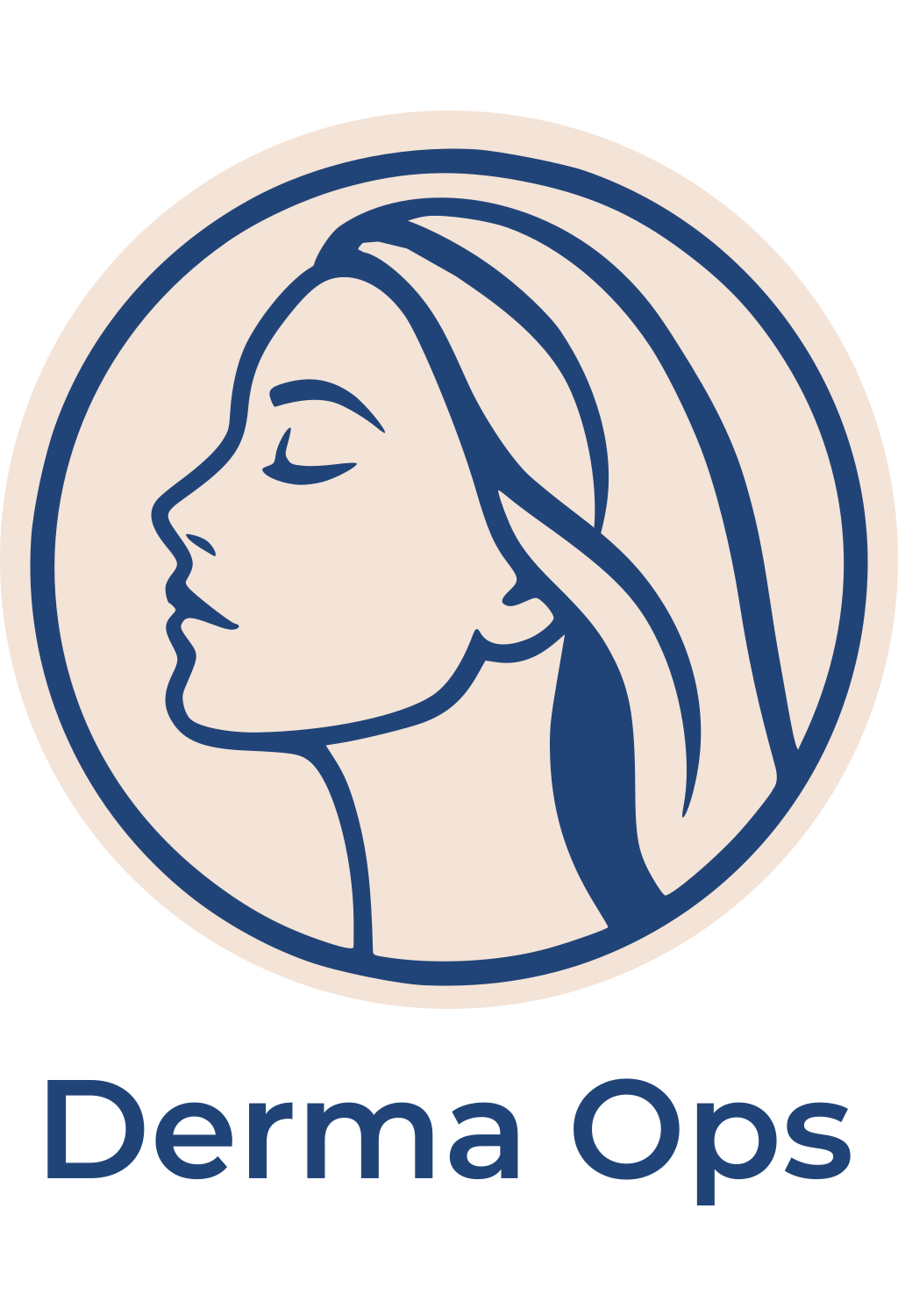What is a Dermatologists EHR software and How is It Different from Regular EHRs?
Picture this: Dr. Neelam Patil, a dermatologist in Mumbai, spends nearly 90 minutes each day juggling patient files, writing prescriptions by hand, and manually tracking appointment schedules. By the time she finishes her administrative tasks, she’s exhausted—and that’s before seeing her first patient. This scenario plays out in countless dermatology clinics across India, where precious consultation time gets consumed by paperwork instead of patient care. Enter DermaOps, a specialized Dermatologists EHR software designed specifically for skin care professionals who need more than what generic electronic health records systems offer. Unlike conventional EHRs that attempt to serve every medical specialty with a one-size-fits-all approach, DermaOps understands that dermatology practices have unique workflows, from tracking skin conditions with visual documentation to managing cosmetic procedure billing. The significance of adopting specialized software extends beyond mere convenience—it represents a fundamental shift in how dermatology practices operate, potentially saving Indian dermatologists 15-20 hours weekly while increasing revenue by 25-30% through improved patient throughput and reduced billing errors.
The Dermatology Practice Challenge
Dermatologists face distinctive operational challenges that set them apart from other medical specialties. A typical skin treatment specialist sees 30-40 patients daily, with each consultation requiring detailed visual documentation, precise medication dosing for various skin conditions, and follow-up scheduling that often spans months. The traditional approach using paper records or generic EHR systems creates bottlenecks at every stage. Dermatology professionals spend approximately 35% of their clinic hours on administrative tasks rather than patient care, according to healthcare efficiency studies in Indian metropolitan practices. The documentation demands are particularly intense—tracking treatment progress for conditions like psoriasis or acne requires comparing photographs over time, maintaining detailed medication histories, and coordinating with pharmacies for specialized topical formulations. Generic electronic health records systems simply weren’t built with these workflows in mind, forcing dermatologists to develop workarounds that consume time and increase error risk.
EHR and Patient Management Tailored for Dermatology
DermaOps transforms patient management by organizing information around dermatology-specific needs. Unlike standard systems that use generic fields, this Dermatologists EHR software categorizes patients by skin conditions, treatment protocols, and cosmetic procedures. Indian dermatologists using specialized systems report completing patient intake 60% faster than with paper-based methods. The software maintains comprehensive patient histories including previous skin conditions, allergies to topical medications, and treatment responses—all accessible within seconds. For a busy dermatology practice handling everything from medical dermatology to cosmetic procedures, having patient data structured around skin care workflows eliminates the constant searching through irrelevant information that plagues generic EHR systems.
Streamlined Appointments and Scheduling
The appointment module recognizes that dermatology practices operate differently from general medicine. Procedures like chemical peels, laser treatments, and biopsies require different time allocations than routine consultations. DermaOps allows practitioners to set procedure-specific durations and manage follow-up chains automatically. When Dr. Patel prescribes a three-month acne treatment protocol, the system can automatically schedule follow-ups at appropriate intervals. Indian practices report reducing no-shows by 40% through automated SMS reminders and WhatsApp integration, directly translating to revenue protection of ₹50,000-₹80,000 monthly for mid-sized clinics.
Medicine Management for Topical and Systemic Treatments
Dermatology involves complex medication management—from compounded topical formulations to systemic treatments like isotretinoin that require careful monitoring. DermaOps maintains a specialized dermatology formulary with dosing guidelines, drug interactions specific to skin medications, and automated alerts for medications requiring periodic lab monitoring. This targeted approach prevents the common errors that occur when dermatologists use generic systems lacking dermatology-specific drug databases. Practices report 90% reduction in prescription errors after implementing specialized Dermatologists EHR software.
Super Quick Prescription Drafting
Time savings become dramatic with prescription templates designed for dermatology. Creating a prescription for common conditions like eczema or fungal infections—which might require 5-7 medications including topicals, oral medications, and supplements—drops from 8-10 minutes to under 60 seconds. DermaOps offers pre-built protocols for frequent conditions while allowing customization. For an Indian dermatologist seeing 35 patients daily, this feature alone saves approximately 4 hours daily, enabling either increased patient volume or improved consultation quality. At an average consultation fee of ₹800-₹1,200, this time reclamation represents potential additional revenue of ₹96,000-₹1,44,000 monthly.
Billing, Accounting, and Tax Management
Indian dermatology practices handle diverse revenue streams—consultations, procedures, cosmetic treatments, and product sales. DermaOps integrates billing with treatment records, automatically generating invoices that comply with GST requirements. The system tracks procedure codes, insurance claims for medical dermatology, and self-pay cosmetic services separately. Practices report reducing billing errors by 85% and cutting accounts receivable time from 45 days to 18 days on average. For a clinic with monthly revenue of ₹15-20 lakhs, improved cash flow and reduced overhead from eliminated billing staff translates to ₹60,000-₹90,000 in monthly savings.
Patient Photos and Documents Archive
Visual documentation defines dermatology. DermaOps provides photo storage with before-and-after comparison tools, annotated images, and organized galleries by condition or treatment. Dermatologists can capture images directly through integrated cameras, eliminating the workflow disruption of transferring photos from phones. The archive function allows instant access to a patient’s complete visual history, essential for tracking chronic conditions. Indian practices report that comprehensive photo documentation increases patient satisfaction by demonstrating treatment progress, improving retention rates by 30-35%.
Mailing from Your Own Email Account
Professional communication maintains your practice’s brand identity. Unlike systems that send communications from generic addresses, DermaOps integrates with your existing email, ensuring appointment confirmations, treatment instructions, and follow-up reminders arrive from your clinic’s domain. This integration maintains the personal touch that builds patient relationships while automating routine communications. Dermatology practices using this feature report 50% improvement in patient engagement with post-treatment care instructions.
Offline Functionality with Optional Data Syncing
Indian internet connectivity remains inconsistent even in urban areas. DermaOps functions completely offline, eliminating the frustration of frozen screens during consultations. Data syncs automatically when connectivity returns, ensuring no information loss. For dermatologists operating satellite clinics or conducting camps in areas with poor connectivity, this feature proves invaluable. Practices report zero downtime due to connectivity issues compared to 2-3 hours weekly with cloud-only systems.
Data Backup to Your Own Firebase Cloud
Data security concerns prevent many Indian dermatologists from adopting EHR systems. DermaOps addresses this by backing up to your personal Firebase cloud account, ensuring you maintain complete control over patient data. This approach complies with Indian data localization requirements while providing enterprise-grade security. The peace of mind from knowing patient records remain secure and recoverable eliminates a major adoption barrier for privacy-conscious practitioners.
Reports and Analysis
Understanding your practice’s performance drives growth. DermaOps generates detailed analytics showing patient volume trends, revenue by procedure type, most common diagnoses, and treatment outcome metrics. Indian dermatologists using these insights report identifying profitable service lines they had underestimated and recognizing declining patient retention early enough to address issues. One Mumbai-based skin treatment specialist increased cosmetic procedure revenue by 40% after analytics revealed untapped demand among existing patients.
The Bottom Line: Real Numbers for Indian Dermatology Practices
The return on investment for specialized Dermatologists EHR software proves compelling. A typical solo practitioner investing ₹50,000-₹80,000 annually in DermaOps sees:
- Time savings: 15-20 hours weekly (₹2,40,000-₹3,60,000 annual value at ₹1,000/hour consultation rates)
- Increased patient volume: Capacity for 5-8 additional patients daily (₹1,44,000-₹2,30,000 additional monthly revenue)
- Reduced overhead: Eliminated/reduced billing staff, fewer errors (₹60,000-₹90,000 monthly savings)
- Improved collections: Faster accounts receivable (15-20% cash flow improvement)
Multi-doctor practices see proportionally larger benefits, with three-dermatologist clinics commonly reporting ₹15-25 lakhs in additional annual net income after implementing specialized EHR systems.
Conclusion
The question isn’t whether dermatology practices need electronic health records—it’s whether they can afford to use generic systems designed for primary care rather than specialized Dermatologists EHR software built for their unique workflows. DermaOps represents more than digitizing paper records; it’s a complete reimagining of how dermatology practices operate in India’s evolving healthcare landscape. The measurable benefits—hours reclaimed daily, revenue increased by 25-30%, overhead reduced significantly—demonstrate that specialized solutions deliver returns that generic systems simply cannot match. For skin care professionals committed to clinical excellence while building sustainable practices, the transition to purpose-built dermatology EHR software isn’t just an upgrade—it’s essential infrastructure for modern practice.
Frequently Asked Questions
Q: How long does it take to implement DermaOps in an existing dermatology practice?
A: Most Indian dermatology practices complete implementation within 2-3 weeks. The process includes data migration from existing systems, staff training, and workflow customization. Unlike generic EHR systems requiring 2-3 months of adjustment, DermaOps’ dermatology-specific design means minimal disruption. Most practitioners report full productivity within the first week of go-live.
Q: Can DermaOps handle both medical and cosmetic dermatology billing?
A: Yes, DermaOps manages the complete billing spectrum for skin treatment specialists. The system differentiates between insurance-eligible medical dermatology services and self-pay cosmetic procedures, generates appropriate documentation for each, and maintains separate revenue tracking. GST compliance is built-in for Indian practices, with automated tax calculations and report generation.
Q: What happens to my patient data if I stop using the software?
A: Since DermaOps backs up to your personal Firebase cloud account, you maintain complete ownership of patient data. You can export complete records in standard formats (PDF, CSV) at any time. Unlike cloud-only Dermatologists EHR software where data remains on vendor servers, your information stays under your control even if you discontinue the service.
Q: Does the offline functionality limit any features compared to online mode?
A: No, DermaOps provides full functionality offline. You can access patient records, create prescriptions, capture photos, and complete all clinical documentation without internet connectivity. The only limitation is that automated backups and email communications queue until connectivity returns, then process automatically. This design ensures uninterrupted clinic operations regardless of internet reliability.
Q: How does DermaOps compare in cost to generic EHR systems for dermatology practices?
A: While pricing varies by practice size, DermaOps typically costs 20-30% more than basic generic EHR systems but delivers 3-4 times the ROI for dermatology practices. The time savings alone—15-20 hours weekly—justify the investment within the first month. When factoring increased patient capacity, reduced billing errors, and eliminated workflow inefficiencies, most Indian dermatologists see positive ROI within 60-90 days compared to 6-12 months for generic systems that require extensive customization.
Ready to transform your dermatology practice? Discover how DermaOps can save you hours daily while increasing revenue. Contact us to schedule your personalized demonstration and see the difference specialized Dermatologists EHR software makes.

